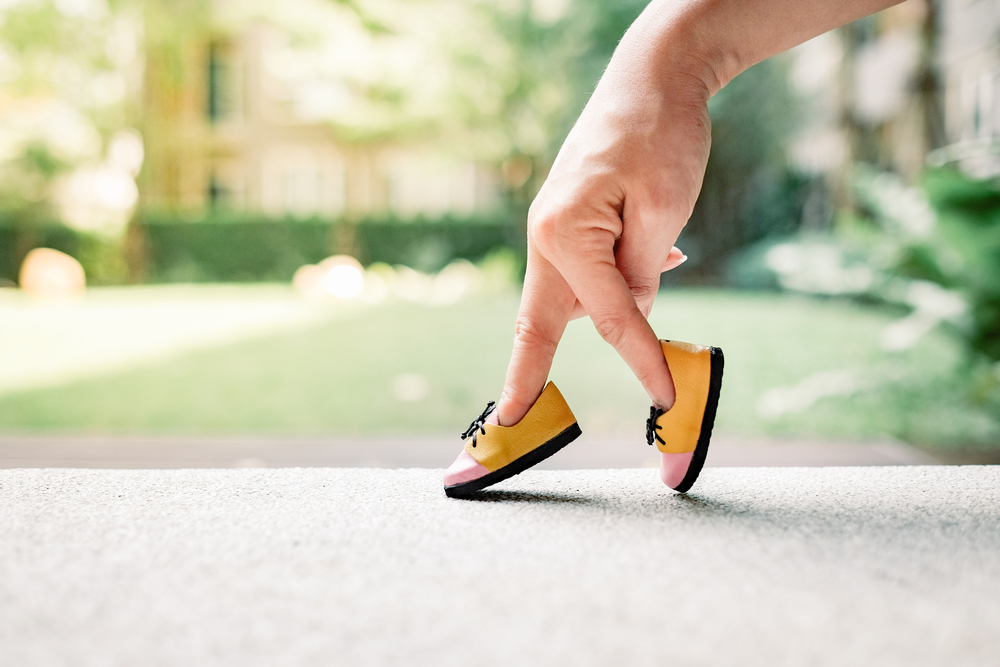Wearable Sensors Show Motor Differences Between Kids with PWS, Down Syndrome

Piti Tangchawalit/Shutterstock
Wearable sensors to detect movement showed differences in motor abilities in children with Prader-Willi syndrome (PWS) and Down syndrome, compared with healthy children. Researchers say these sensors could be used to personalize patient therapy based on specific motor limitations.
“Dynamic balance assessment during gait in children with Down and Prader-Willi syndromes using inertial sensors” was published in the journal Human Movement Science.
PWS and Down syndrome are chromosomal disorders with shared clinical features, including delayed cognitive or motor development. Reduced muscle tone, in particular, is common in both conditions and may cause impaired posture and walking instability.
Despite these commonalities, previous studies have shown differences in posture and walking strategy between PWS and Down syndrome patients. Understanding these differences can help in the development of personalized rehabilitation programs.
To allow the comparison among children with PWS, Down syndrome, and healthy children, the team developed a multi-sensor measurement protocol to assess walking patterns based on the use of wearable inertial sensors.
The study included 15 children with Down syndrome (median age of 6.6 years), 11 children with PWS (median age of 5.3 years), and 12 healthy children (median age of 6.1 years). Gender, leg length, and body mass index (BMI) were overall similar among the three groups.
Movement-measuring sensors were placed on the breastbone (sternum), pelvis, and at the level of each ankle to measure participants’ movement patterns. Wearing these four sensors, participants performed a 10-meter walking test to assess walking speed, stride frequency, stride length, walking symmetry, and upper-body stability.
Researchers also measured participants’ intelligence quotient (IQ) and gross motor functional measures (GMFM-88), including lying, sitting, standing, walking, running, and jumping.
Results showed that children with Down syndrome and PWS had reduced stride length and increased stride frequency, possibly an approach to maintain walking balance and stability.
Also, compared with healthy children, Down syndrome and PWS children had reduced walking symmetry, and an increased measured acceleration of the pelvis while walking. While pelvic acceleration in Down syndrome and healthy children was reduced (by about 40 percent) at the sternum level, this reduction was limited in children with PWS.
The limited sternum-derived counterbalance (upper-body stability) in children with PWS further resulted in a reduced walking stability, possibly linked to the Trendelenburg Gait, an abnormal walking pattern often seen in PWS patients.
Of note, children with PWS showed a positive correlation between IQ scores and walking stability and symmetry. According to the team, “this result corroborates previous findings about the existing relationship between motor and cognitive performance in children with/without intellectual disability.”
Researchers further found that limited gross motor functions (measured by GMFM-88) positively correlated with stride frequency and acceleration at pelvis level, and negatively correlated with anterior-posterior walking symmetry.
In this cohort, no significant difference between Down syndrome and PWS children was found regarding IQ or GMFM-88.
Overall, the study showed that children with Down syndrome and PWS exhibit different walking strategies compared with healthy children. These differences were not influenced by walking speed or BMI of the participants.
According to the team, the latter point is noteworthy, because it indicates that observed deviations are independent of speed and obesity, suggesting a link between the specific medical condition and motor deviations.
“[O]ur findings support the adoption of integrated approaches to dynamic balance assessment, providing clinicians with additional and quantitative information related to gait stability and symmetry,” the researchers said.
The team believes that the sensors “could support health professionals in designing personalized treatments that, in turn, would help improving patients’ quality of life in terms of both physical and social perspectives.”






